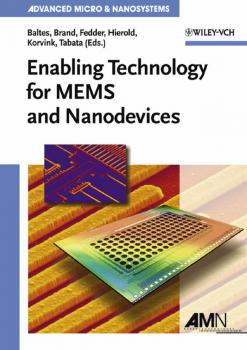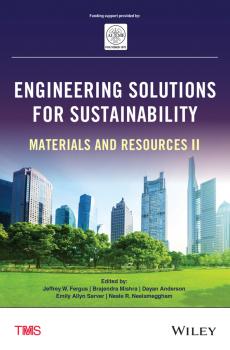Техническая литература
Различные книги в жанре Техническая литератураEnergy Technology 2014. Carbon Dioxide Management and Other Technologies
This book addresses the issues, intricacies, and challenges relating to energy and environmental sciences. Papers cover various technological aspects of sustainable energy eco-systems and processes that improve energy efficiency, and reduce and sequestrate carbon dioxide (CO2) and other greenhouse emissions. The collection also emphasizes the need for sustainable technologies in extractive metallurgy, materials processing and manufacturing industries with reduced energy consumption and CO2 emission. Industrial energy efficient technologies include innovative ore beneficiation, smelting technologies, recycling and waste heat recovery. The book also carries contributions from all areas of non-nuclear and non-traditional energy sources, including renewable energy sources such as solar, wind, and biomass. Papers from the following symposia are presented in the book: Energy Technologies and Carbon Dioxide Management High-temperature Material Systems for Energy Conversion and Storage Solar Cell Silicon
Characterization of Minerals, Metals, and Materials 2013
This collection of proceedings from one of the most popular TMS symposia explores the current progress in the characterization of materials. Addressing technologies, applications, and innovative research, these papers cover definations of ferrous and nonferrous metals and alloys, minerals, advanced and soft materials, and inorganic materials. Extraction and environmental applications, as well as surface, joint, and processing of metals. This is a valuable reference for scientists and engineers working with materials in the minerals, metals, and materials industry.
Multiphysics Simulation by Design for Electrical Machines, Power Electronics and Drives
Presents applied theory and advanced simulation techniques for electric machines and drives This book combines the knowledge of experts from both academia and the software industry to present theories of multiphysics simulation by design for electrical machines, power electronics, and drives. The comprehensive design approach described within supports new applications required by technologies sustaining high drive efficiency. The highlighted framework considers the electric machine at the heart of the entire electric drive. The book also emphasizes the simulation by design concept—a concept that frames the entire highlighted design methodology, which is described and illustrated by various advanced simulation technologies. Multiphysics Simulation by Design for Electrical Machines, Power Electronics and Drives begins with the basics of electrical machine design and manufacturing tolerances. It also discusses fundamental aspects of the state of the art design process and includes examples from industrial practice. It explains FEM-based analysis techniques for electrical machine design—providing details on how it can be employed in ANSYS Maxwell software. In addition, the book covers advanced magnetic material modeling capabilities employed in numerical computation; thermal analysis; automated optimization for electric machines; and power electronics and drive systems. This valuable resource: Delivers the multi-physics know-how based on practical electric machine design methodologies Provides an extensive overview of electric machine design optimization and its integration with power electronics and drives Incorporates case studies from industrial practice and research and development projects Multiphysics Simulation by Design for Electrical Machines, Power Electronics and Drives is an incredibly helpful book for design engineers, application and system engineers, and technical professionals. It will also benefit graduate engineering students with a strong interest in electric machines and drives.
Micro- and Nano-Structured Interpenetrating Polymer Networks. From Design to Applications
This book examines the current state of the art, new challenges, opportunities, and applications of IPNs. With contributions from experts across the globe, this survey is an outstanding resource reference for anyone involved in the field of polymer materials design for advanced technologies. • Comprehensively summarizes many of the recent technical research accomplishments in the area of micro and nanostructured Interpenetrating Polymer Networks • Discusses various aspects of synthesis, characterization, structure, morphology, modelling, properties, and applications of IPNs • Describes how nano-structured IPNs correlate their multiscale structure to their properties and morphologies • Serves as a one-stop reference resource for important research accomplishments in the area of IPNs and nano-structured polymer systems • Includes chapters from leading researchers in the IPN field from industry, academy, government and private research institutions
Enabling Technologies for MEMS and Nanodevices. Advanced Micro and Nanosystems
This edition of 'CMOS-MEMS' was originally published in the successful series 'Advanced Micro & Nanosystems'. A close look at enabling technologies is taken, the first section on MEMS featuring an introduction to the challenges and benefi ts of three-dimensional silicon processing. An insider's view of industrial MEMS commercialization is followed by chapters on capacitive interfaces for MEMS, packaging issues of micro- and nanosystems, MEMS contributions to high frequency integrated resonators and filters, and the uses of MEMS in mass data storage and electrochemical imaging by means of scanning micro- and nanoprobes. The second section on nanodevices first tackles the emerging topic of nanofluidics with a contribution each on simulation tools and on devices and uses, followed by another two on nanosensors featuring CNT sensors and CMOS-based DNA sensor arrays, respectively.
From Smart Grids to Smart Cities. New Challenges in Optimizing Energy Grids
This book addresses different algorithms and applications based on the theory of multiobjective goal attainment optimization. In detail the authors show as the optimal asset of the energy hubs network which (i) meets the loads, (ii) minimizes the energy costs and (iii) assures a robust and reliable operation of the multicarrier energy network can be formalized by a nonlinear constrained multiobjective optimization problem. Since these design objectives conflict with each other, the solution of such the optimal energy flow problem hasn’t got a unique solution and a suitable trade off between the objectives should be identified. A further contribution of the book consists in presenting real-world applications and results of the proposed methodologies developed by the authors in three research projects recently completed and characterized by actual implementation under an overall budget of about 23 million €.
Design, Control, and Application of Modular Multilevel Converters for HVDC Transmission Systems
Design, Control and Application of Modular Multilevel Converters for HVDC Transmission Systems is a comprehensive guide to semiconductor technologies applicable for MMC design, component sizing control, modulation, and application of the MMC technology for HVDC transmission. Separated into three distinct parts, the first offers an overview of MMC technology, including information on converter component sizing, Control and Communication, Protection and Fault Management, and Generic Modelling and Simulation. The second covers the applications of MMC in offshore WPP, including planning, technical and economic requirements and optimization options, fault management, dynamic and transient stability. Finally, the third chapter explores the applications of MMC in HVDC transmission and Multi Terminal configurations, including Supergrids. Key features: Unique coverage of the offshore application and optimization of MMC-HVDC schemes for the export of offshore wind energy to the mainland. Comprehensive explanation of MMC application in HVDC and MTDC transmission technology. Detailed description of MMC components, control and modulation, different modeling approaches, converter dynamics under steady-state and fault contingencies including application and housing of MMC in HVDC schemes for onshore and offshore. Analysis of DC fault detection and protection technologies, system studies required for the integration of HVDC terminals to offshore wind power plants, and commissioning procedures for onshore and offshore HVDC terminals. A set of self-explanatory simulation models for HVDC test cases is available to download from the companion website. This book provides essential reading for graduate students and researchers, as well as field engineers and professionals who require an in-depth understanding of MMC technology.
Handbook of Fermented Meat and Poultry
Fermented meat products have been consumed for centuries in many different parts of the world and constitute one of the most important groups of food. Bacterial cultures are used in their manufacture to preserve the meat and confer particular textures and sensory attributes. Examples of fermented meats include salami, chorizo, pepperoni and saucisson. This fully revised and expanded reference book on meat fermentation presents all the principle fermented meat products and the processing technologies currently used in their manufacture. The 54 chapters of this substantial book are grouped into the following sections: Meat fermentation worldwide: overview, production and principles Raw materials Microbiology and starter cultures for meat fermentation Sensory attributes Product categories: general considerations Semidry-fermented sausages Dry-fermented sausages Other fermented meats and poultry Ripened meat products Biological and chemical safety of fermented meat products Processing sanitation and quality assurance There are five new chapters in the second edition that address the following topics: Smoking and new smoke flavourings; Probiotics; Methodologies for the study of the microbial ecology in fermented sausages; Low sodium in meat products; and Asian sausages. Handbook of Fermented Meat and Poultry, Second Edition provides readers with a full overview of meat fermentation, the role of microorganisms naturally present and/or added as starter cultures, safety aspects and an account of the main chemical, biochemical, physical and microbiological changes that occur in processing and how they affect final quality. Finally, readers will find the main types of worldwide fermented meat products, typically produced in different areas, with the description of their main characteristics.
Engineering Solutions for Sustainability. Materials and Resources II
This book contains a collection of papers presented at Engineering Solutions for Sustainability: Materials and Resources II, a special symposium organized as part of the TMS 2015 Annual Meeting & Exhibition and held in Orlando, Florida, March 15-19, 2015. With impending and burgeoning societal issues affecting both developed and emerging nations, the global engineering community has a responsibility and an opportunity to truly make a difference and contribute. The papers in this collection address what materials and resources are integral to meeting basic societal sustainability needs in critical areas of energy, transportation, housing, and recycling. Contributions focus on the engineering answers for cost-effective, sustainable pathways; the strategies for effective use of engineering solutions; and the role of the global engineering community. Authors share perspectives on the major engineering challenges that face our world today; identify, discuss, and prioritize engineering solution needs; and establish how these fit into developing global-demand pressures for materials and human resources.
The Greening of Pharmaceutical Engineering, Practice, Analysis, and Methodology
The pharmaceutical industry is one of the most important industries in the world, offering new medicines, vaccines, and cures to a global population. It is a massive industry, worthy of a deep and thorough examination of its processes and chemistry, with a view toward sustainability. The authors describe what is and isn't truly sustainable, offering a new approach and a new definition of the sustainability of pharmaceutical and chemical engineering and the science behind it. This is a cutting-edge work, aimed at engineers, scientists, researchers, chemists, and students.









